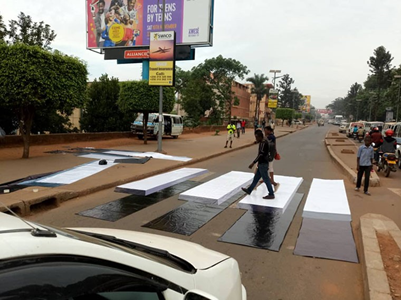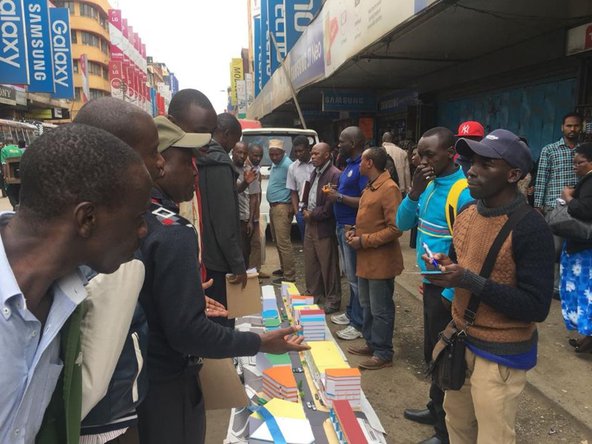Programme: Cities & Infrastructure Programme 2017
Award-holder: Dr Steve Cinderby, University of York
Project title: Implementing Creative Methodological Innovations for Inclusive Transport Planning
This project investigated how creative methods could enable vulnerable groups to participate equitably in streetscape and transport planning and is helping to improve road safety in Kampala and Nairobi.
Road safety remains a key issue in many low-middle income countries. In Kampala, Uganda, over half of urban residents walk to work, yet infrastructure provision for non-motorised transport remains limited and is often of poor quality. In Nairobi, Kenya, there are 600 road deaths per year, of which nearly half are pedestrians. Improving the infrastructure for walkers and cyclists could significantly reduce these deaths and improve the livability of cities for all residents, contributing to the attainment of the UN’s Sustainable Development Goal 11. However, the inclusion of vulnerable groups (such as the poor, elderly, disabled or children) in the development of streetscapes, to ensure equitable development, is rare.

This project involved an interdisciplinary team of social scientists, engineers, creative professionals and urban planners, who experimented with various physical and digital engagement approaches, ranging from children’s cartoons, through drone imagery, to 3D zebra crossings. They tested whether these novel approaches could improve the range, and level of, participation of vulnerable groups in transport and road safety planning and concluded that this was indeed the case.
The project has led to a series of practical changes on the ground in the capital cities of both Uganda and Kenya.
In Kampala, the researchers worked with 100 children from two primary schools to understand the dangers they face walking to school and improve their understanding of road safety using creative methods such as drawing, drama and song. The children became road safety champions for their schools, teaching other pupils the principles of road safety. The project also funded and installed the first zebra crossings outside the two primary schools. The crossings, combined with training and awareness-raising, is expected to reduce child mortality and help shift public attitudes to road safety. This approach has been picked up by the Kampala Capital City Authority which is in the process of expanding it to schools across the country.
A mobile 3D zebra crossing that presents drivers with the optical illusion of raised bars across the road was furthermore tested as part of the project. This 3D crossing received significant attention in the local media, raising awareness of the need for traffic-calming measures in Kampala. The Uganda Road Safety Council is already implementing the 3D zebra crossing at different sites around the downtown area.
In Nairobi, the city governor adopted the traffic-calming approach co-designed by the research team and local communities, including poorer and more marginalised road users such as women street sellers, local delivery cart workers, disabled residents and commuting pedestrians. The co-designed scheme was implemented on a key street in the city centre in time for the UN Habitat conference in May 2019. Nairobi City Authority officials consider the experiment to have "changed the way [in which] we interact with communities. We are now using more creative methods to communicate [about the need for traffic calming] including videos and graphics." The local officials now recognise the need to shift the focus away from vehicles and onto road users in city planning processes, with the Nairobi Road Safety Council drawing on the project’s methodology in its outreach plans.
The creative methods trialled by the project resulted in different voices being heard in the urban planning process by enabling participation in non-conventional ways. They engaged excluded groups, cultivated trusting relationships, created new knowledge, built capacity and ultimately initiated change.

